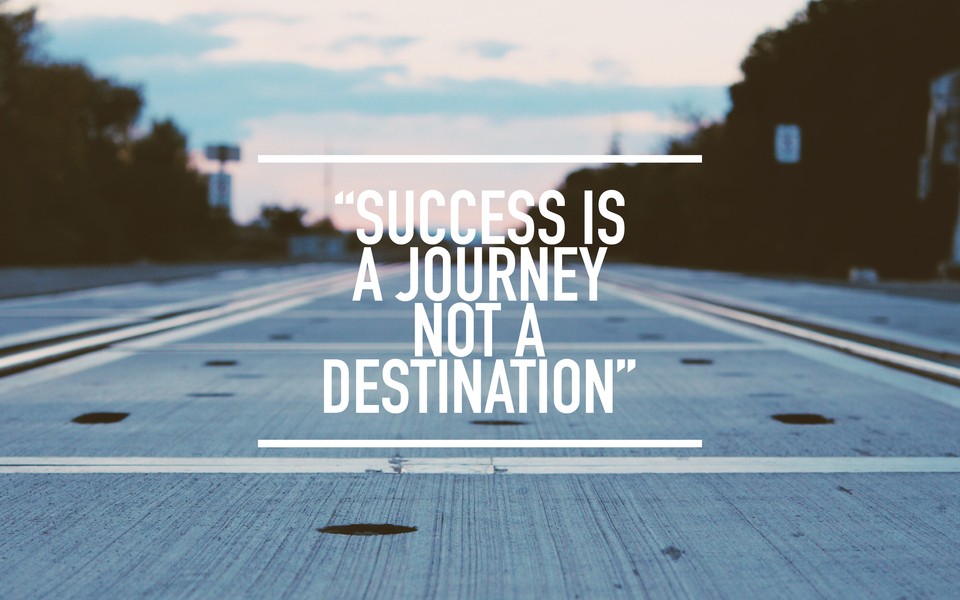The secret to help you achieve what you want without wasting time
Research shows that clearly defining goals is a necessary condition to motivate them.
If it's unclear what to do, it's hard to get motivated. This is also the reason why seemingly simple jobs like sending faxes can take months to complete. Lack of a specific method will result in you not doing it until you are asked to do it or there is no time to delay it.
Have you ever fallen into those circumstances?
Unfortunately, lack of clarity is the reason why so many people choose to do / have things less than their dreams. According to Robert Brault, the author of Round Up the Usual Subjects , "we are prevented from achieving the goal not by the obstacles but by having a clearer path already formed which leads us to achieve. a lower goal than what I want ".
You want to be so clear that you are willing to accept things that are not commensurate with you, willing to lower your goals, suffer, simply because the path to your true goal is too much. dark.
When trying to accomplish something bigger, you can answer the question of why (why) but don't know how (how). You feel confused because you don't know which direction will help you achieve those goals.
You have no idea how to do what you want.
According to some scholars, that fear fear may be the foundation of all other fears. In order to avoid falling into this scalar situation, most people give up their dreams.
Take what you don't know
 The secret to help you achieve what you want without wasting time Picture 1
The secret to help you achieve what you want without wasting time Picture 1
It sounds contradictory to say "grab" something that you "never knew what it was".
It was a dangerous thing, Frodo, stepped out of the door. When you walk on the road, if you don't notice at your feet, you won't know where you can fall - JRR Tolkein, Lord of the Rings.
When faced with something you don't know, what is your feeling?
Most people acknowledge that the unknown is a threat, signaling that you won't be able to endure the trouble for too long. However, some people are open and ready to receive troubles.
Some researchers have made a very interesting finding: children generally have a better ability to tolerate ambiguity than adults. They are also willing to accept dark situations - situations in which failure or victory cannot be determined. However, when growing up, their desire to be safe and secure will keep them safe in their comfort zones.
Research also finds that the more you feel satisfied with the job, the more resistant you are to things that are not clear. In other words, if you enjoy and trust what you are doing, you will control the uncomfortable feeling of those unknown things. Like Bill Walsh - the former 49ers rugby coach once said: "If your reason is strong enough, you will find out how (how)".
Look for clarity as quickly as possible
You accept inferiority. Now, if you want to achieve bigger things, your path will become unclear and dark. The emotional need of clarity and fear of the unknown causes people to give up their dreams to pursue simpler things.
Clarifying goals is essential to work motivation. Therefore, to get the motivation to achieve your big dreams, you need to be clear. However, this does not mean you have to have everything to achieve them. Rather, you must grasp the first, second step . what to do.
If you have run 1 mile and your dream is to run to the 50th mile, you only need to have enough information and support to run the 3rd or 4th mile. Once you get there, you will need more support. new help. However, you don't know what they will be because you don't know anything at the moment. When you reach the next step, you will have bigger questions. You will have better assessments about who can help you reach the 5th, 6th, 7th or 8th mile.
You are a treasure hunter and you must find hints and instructions to find your way. It is a process and emotional experience to pursue big dreams.
This is what you need to move forward now:
- A standard check-point (so you'll know what you need to do).
- A timeless schedule.
- Appropriate tools and systems.
- A support structure.
If there are 4 things, you will have enough clarity and therefore enough motivation to move forward. You will reach out, grow and move while most of the others are left somewhere on the road from the first to the 50th mile. While they see the forest from afar, you are wriggling through. the bushes. And soon, you will reach the other side of the forest.
 The secret to help you achieve what you want without wasting time Picture 2
The secret to help you achieve what you want without wasting time Picture 2
With this platform, this is the most effective way I have found to get clear enough to keep moving forward.
Purposeful learning
Where không có sự xác thực bạn bị mất trong knowledge? Where là chúng knowledge đã bị mất trong thông tin? - TS Eliot.
What is the wisdom we lost in knowledge? What is the knowledge we lost in information?
When you seek learning, it should have a purpose.
As a coach for managers and managers, I was surprised that many people sought advice without even knowing what they wanted. I cannot make decisions for them and no one can make decisions for me.
However, when people use my service for a specific reason, it is clear, I am the right person to take them from point A to point B and everything will be great.
When you know what you want to learn, then you will decide who can help you achieve it."Never ask someone to give you advice when you don't want to tell your purpose."
Context-based Learning (Context-based Learning)
A missionary training center called the Missionary Training Center (MTC) has used a system of methods that can help learners gain a sizable knowledge within a few weeks. A normal student takes 3 or 4 years to finish. Recognizing the effectiveness of this system, many universities and military organizations also try it and the results they receive are amazing.
Basically, MTC uses a method called "Context-based learning", which understands this context-based learning accordingly. Accordingly, students will begin to utter a phrase, learn pronunciation and once they grasp the meaning of the word, the teachers will divide them into groups. These groups will be involved in acting with real situations around the use of words learned in different contexts.
According to calculations, role-playing games account for about 70% of the learning time of the courses at MTC. Students will be learning while playing and there is always a teacher standing next to each student to support them when needed.
This system is quite simple:
- Catch the idea.
- Practice and apply that idea in real-life situations.
- Be guided and receive feedback (feedback).
- Repeat.
- Be guided and receive feedback (feedback).
Learning is a long-term change in awareness and behavior. In other words, learning really involves change that is continuous, often about how we view and act on the world. The accumulation of information alone is not learning.
If you want to learn something fast, you need to "sink" in that thing and immediately apply what you have learned.
For example, the best way to learn Spanish is to immerse yourself in Spanish culture (move to this country or live in areas where Spaniards live and talk to them). Each day for 15 minutes to learn flashcard also helps you improve your language ability but to be really effective there is nothing better than "immersion" in the culture of that country.
1. Thanks to the support of others
When students are ready, the teacher will appear. When students are really ready, the teacher will disappear - Lao Tzu
When you are truly committed to achieving something, you will learn very quickly and now, you need a "teacher" to support you.
This "teacher" is not really a specific person, but it can be a book or an online course. However, if you are a real person, there will be more obvious advantages such as you can ask them directly and get detailed feedback.
Recently, I hired a tutor to teach me to use some software to do business online. Because of the distance, I decided to go to his house for 2 days and stay there to facilitate my study.
In those 2 days, I learned a lot of things that I would have to take 6 months if I study on my own. Thanks to the help of the instructor, I learned faster, knew how to use the computer fluently and any questions, he also explained to me in great detail.
2. Repeat until your skill becomes "unconscious" action.
In the process of applying what I have learned in practice, I also received his remote assistance. Whenever he had trouble recalling what he had learned, he helped me remember.
When I first started practicing, I encountered many difficulties, taking a lot of time and effort to complete. Therefore, I did it over and over again until I became fluent. Over time, I am more proficient and also more confident with my abilities.
Learning something new is all about remembering and how you use it. Initially, the prefrontal cortex (the prefrontal cortex), which stores your short-term memory - will really be "busy" in finding ways to get the job done.
However, when you get used to it, things will become very simple and you will master that skill to the point that it can be done automatically rather than paying too much attention. At this point, your brain can focus on other things.
The process to turn a skill into an automatic routine will consist of 4 steps or 4 stages:
1. Break skills into practice parts and learn to repeat each section until mastery is achieved. For example, if you play basketball, practice pushing the ball into the net. In addition, it is important that you first make the first step before moving on to the next steps.
2. Make the skill difficult to conquer until it feels too hard to do. At this point, reducing the difficulty will help you determine almost exactly the highest limit in your current ability.
3. Set time limits. For example, math teachers often ask students to find answers of an equation in a short time. Adding this obstacle will create two benefits. First, it forces you to work fast and second, which makes part of your working memory to be fully exploited by forcing it to remain aware of the "ticking" sound. of watches.
4. Practicing with increasing memory load , in particular, practice "exercise" activities for the brain such as playing intellectual games, listening to music .
If you want to understand something deeply and apply what you have learned in each situation as well as with different purposes, you must first understand them thoroughly and in detail.
3. Set specific goals with strict deadlines
Certain thinking is about thinking and acting like what you are doing is a known result because you have already set the conditions for it to happen - Eban Pagan.
 The secret to help you achieve what you want without wasting time Picture 3
The secret to help you achieve what you want without wasting time Picture 3
Once the "training" process is complete, you need to apply what you have learned in practice. You will enforce by setting great goals that require you to use the acquired knowledge.
However, there are two things to remember here: break down your goals and determine the actual completion time for each of those goals. After each end of a task, review the process, ask for feedback, advice and continue with the next goal.
4. Follow up and report
When performance has been measured, it will be improved. When performance has been measured and reported, the pace of progress will increase - Thomas S. Monson.
- Clarity creates motivation.
- Subscribe to create awareness.
- The report promotes accountability.
By doing these 3 things, you will have rapid progress.
If you don't keep track of your daily behaviors, it's no wonder you're worse than you think. For example, many people do not understand why their money "does not fly" because they do not track costs.
According to a study, self-regulation is a psychological process to find inconsistencies between goals and behaviors. It will be a fire bait that gives you more motivation to achieve what you want.
Specifically, self-regulation takes place in three ways:
- Self-monitoring determines the current, how effectively you are working.
- Self-evaluation determines the current, how effectively you are working against the target.
- Self-reaction determines how you think and feel about the goal. When dissatisfied with efficiency, self-reaction will motivate you to reallocate motivational resources.
Through monitoring, researchers also found that accountability action will contribute to improved performance. When reporting results to someone, especially someone you respect, it will be a source of motivation from outside and very close to help you succeed.
During the explanation process, you will also receive specific feedback and instructions on what needs improvement.
Conclusion
Striving to accomplish big goals is not easy. Most people will give up their dreams to choose clearer paths with what will be worth less than the original goal.
If you want to get to your goals quickly, you need to be proficient in clarifying the next steps to go on your journey and the best way to do this is through training based on these real situation and immersed in it.
The more specific, deep and detailed clarity, the greater the goal becomes. To ensure that you achieve them, you also need to keep track of your daily activities and make sure people follow your progress.
Once conditions have been created, success is inevitable.
You should read it
- How To Set SMART Goals That You Will Accomplish
- Learn 10 times faster if you try these 5 tips
- If you want to succeed, remember these 15 things carefully
- How to Be Committed to Your Goals Even During Hard Times
- 20-minute rule to form a habit: Just spend 20 minutes a day and do it continuously for 30 days
- How to learn everything in just 2 days but normally it takes another 6 months?
- How to set up Reading Goals in iOS 13
- How to accomplish goals in life
- How to Set Fitness Goals
- If you are passionate about setting goals, you have made a huge mistake
- How to Accomplish a School Goal
- These are 7 common mistakes that prevent you from achieving your life goals
May be interested

Things you should not do when you turn 24

9 things happy people learn to ignore

Tips for reading textbooks quickly and effectively

These are 10 ways to 'keep the fire' when losing CEO motivation

23 facts about rich people not everyone knows

26 things you need to master to be able to 'survive' in modern life






 15 habits of wasting time need to be removed immediately
15 habits of wasting time need to be removed immediately 13 signs that you are 'wasting' time in vain
13 signs that you are 'wasting' time in vain Attendance of 20 things is wasting your money
Attendance of 20 things is wasting your money Why shouldn't we reply to every message right away?
Why shouldn't we reply to every message right away? How to chat secret groups on Viber
How to chat secret groups on Viber The biggest time wasting cleaning mistakes
The biggest time wasting cleaning mistakes